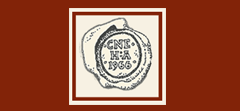Abstract
For nearly a half-century, Strawbery Banke’s archaeology program has contributed to and benefited from major trends in American urban archaeology. During the 1960s this outdoor museum in Portsmouth, New Hampshire, was a focal point for radically different approaches to the study of urban landfill by Roland Robbins and Daniel Ingersoll, at a time when landfill was largely neglected. Strawbery Banke also explored the variable practices of contracted and academic archaeology and realized early on that neither approach produced an enduring legacy of public engagement. In 1975 the museum experimented with retaining a resident archaeologist and soon committed to construction of the Jones House Archaeology Center and the hosting of an ongoing public archaeology program. This article reviews the genesis and evolution of this program during the period 1970–1985.
Recommended Citation
Pendery, Steven R.
(2020)
"Death and Rebirth of Public Archaeology at Strawbery Banke, 1970–1985,"
Northeast Historical Archaeology:
Vol.
49
49, Article 4.
Available at:
https://orb.binghamton.edu/neha/vol49/iss1/4


